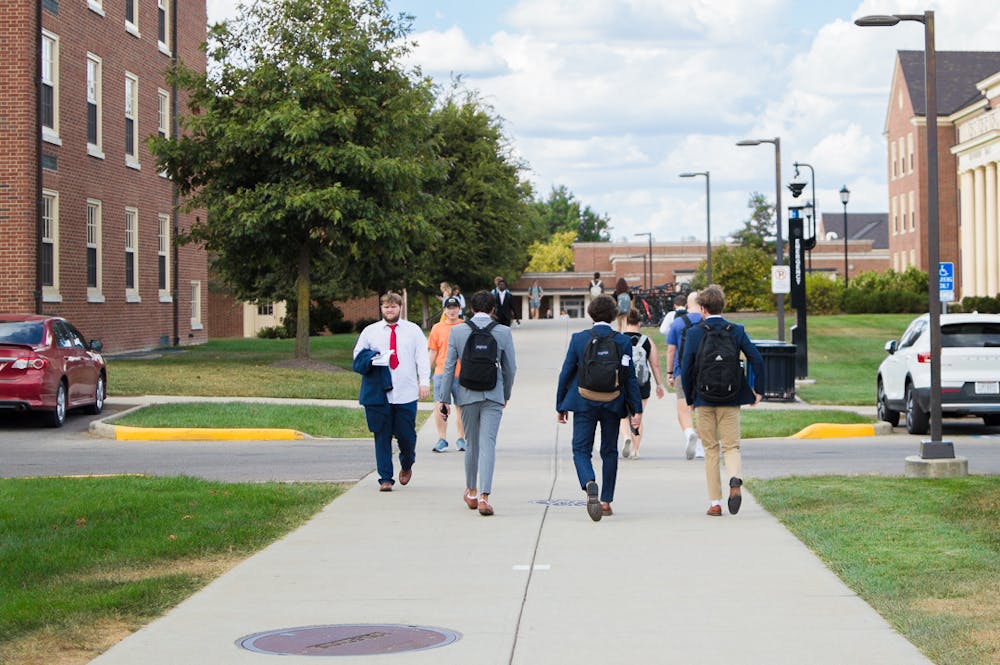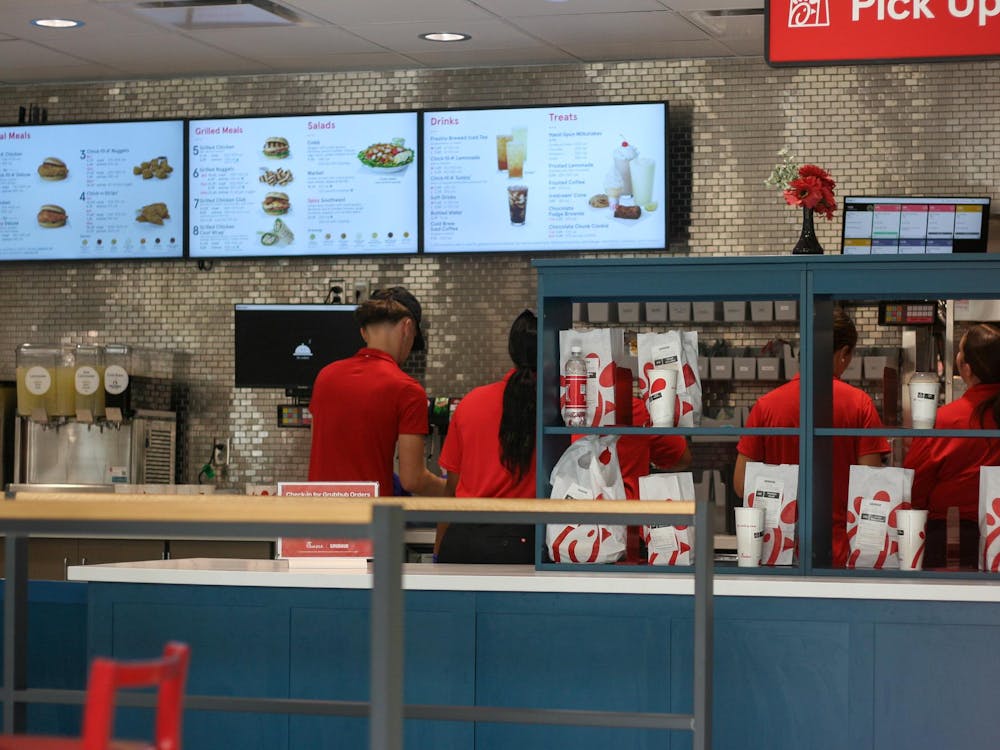This semester, Miami University welcomed nearly 4,330 new students to Oxford, transferring the title of the largest class in university history from the class of 2023 to the class of 2028. As the impressive number of new students moved in during a hotter-than-average late summer, one thing was sure to be on all 4,330 minds: keeping cool.
Aubrey Olekas, a first-year accounting major, moved into Western Campus’ McKee Hall. The hall has been used for COVID-19 isolation housing in recent years, but has since reopened for regular use to accommodate Miami’s increasing student population.
“The only thing I don’t like about living in my dorm is that it’s very, very old, so it’s not really accessible,” Olekas said. “But the rooms themselves are very cold, I can make it go down to like 60 degrees.”
Though some students find their housing temperature control sufficient, a public announcement from the Miami University Energy Department caught some attention.
“I was actually aware of the emails sent,” Olekas said. “I actually did reduce my kilowatt usage during those hours.”
Olekas is referring to a series of emails sent by the department urging students to reduce their electric consumption during anticipated peak use. In the first few weeks of the semester, anticipation of uncommonly high electrical loads in the Oxford region led Area Electric Utilities to issue peak electric alerts.
To help curb Miami’s impact on that load, the university community was asked to turn off all non-essential electrical items for a few hours a day.
“Those terms are all in reference to the amount of electrical energy used over that time period, that’s what we call our load or demand kilowatts,” said Malcolm Drane, the director of Miami University Energy Systems.
Drane and his department oversee the production and distribution of utilities on campus, including the electrical high-voltage distribution for campus buildings. While researching the relationship between our growing class sizes and spikes in utility load, Drane discovered an interesting trend in campus energy consumption.
“I pulled up all my data and there was a significant increase compared to the first week of school last year,” Drane said. “There was about a 25% increase, so I said, ‘Well, there might be something to this.’”
Eventually, this significant jump came back down. Drane found that when looking at the first three weeks of this school year, there was only a 3.7% increase in energy usage compared to last year.
“So a slight increase, but nothing compared to the 25% we saw in the first week,” Drane said.
Enjoy what you're reading?
Signup for our newsletter
Incorporating data points other than student population paints a more complex picture of our electric consumption. Weather is an especially important variable. High temperatures create a greater demand for utilities like air conditioning, which are often left on and ignored for long periods.
“As there’s extreme heat, our air conditioning systems are working extremely hard,” Drane said. “There’s just a lot more demand for energy on campus.”
Compared to the mid-20th century, summers are now categorized as either hot or extremely hot. Hotter summers and warmer autumns are more common throughout the Midwest, and Oxford is no exception.
Drane noticed a stronger correlation between temperature and our energy consumption. When students moved in at the start of the fall semester in 2023, temperatures were slightly milder than temperatures in 2024 and the decrease in energy use was notable.
Though temperature remains a more defining variable in energy consumption data for now, Drane acknowledges that growing class sizes may complicate Miami’s utility infrastructure and sustainability goals.
“More students, more facilities, that’s a definitive increase for energy demand on campus,” he said. “It’s not one that I don’t think we can face [it], but we do need to ask ourselves how we can continue to meet those sustainability goals while also meeting the needs of students and staff.”
Achieving those energy conservation goals requires participation from the greater community. In their notices to students, Miami University Energy Systems shared a few tips on reducing impact.
All students can take small steps toward reducing their personal impact on the electrical load. Simple acts such as turning off the lights and avoiding turning air conditioning systems to their lowest settings for long periods may seem miniscule, but they have a substantial positive impact on sustainability efforts when done by many people.
“I think the biggest thing is just being mindful of the energy that you’re consuming,” Drane said. “You’re definitely entitled to being comfortable, but know that those types of things have a substantial impact on what we do as far as providing energy on campus.”




